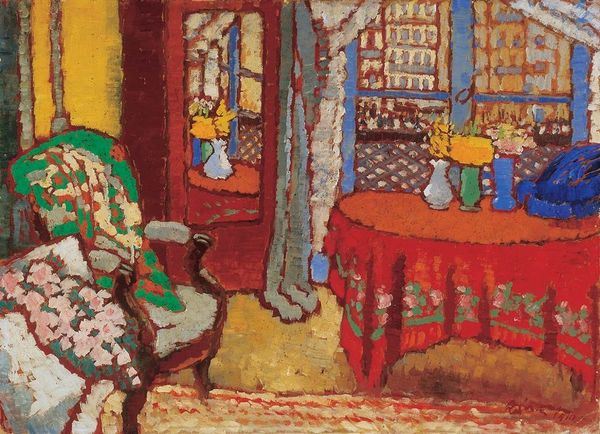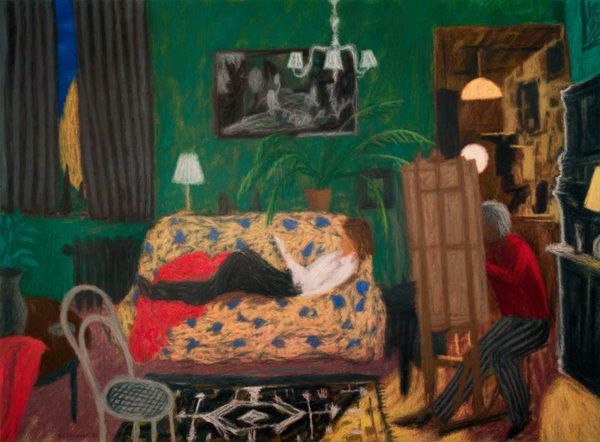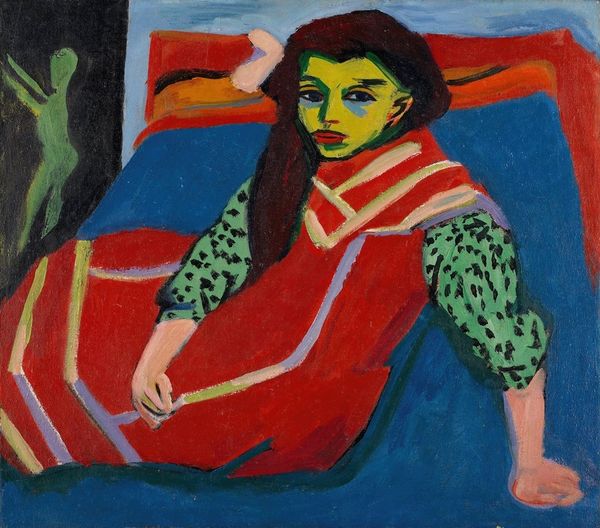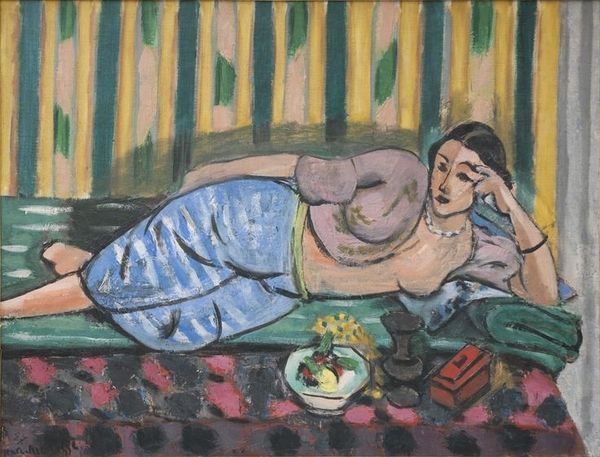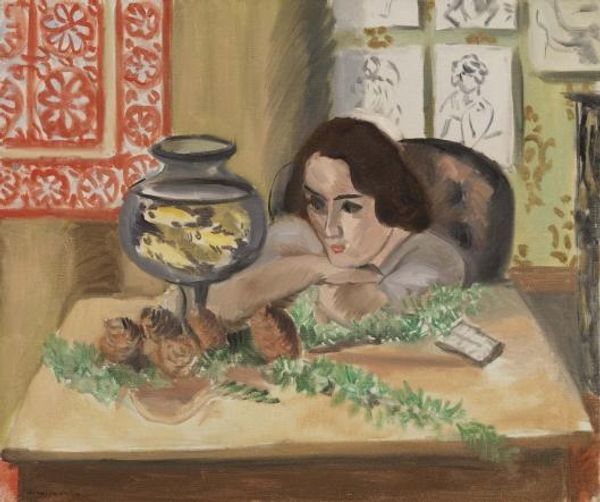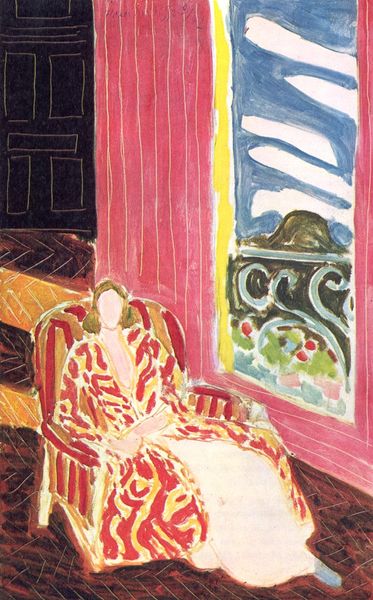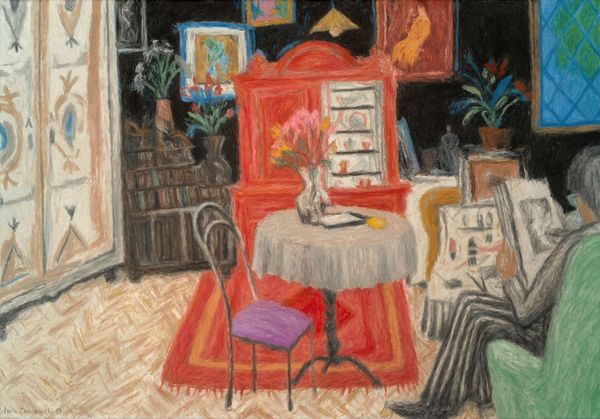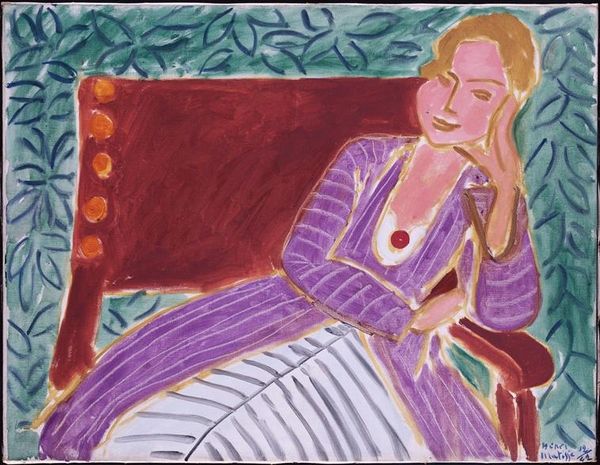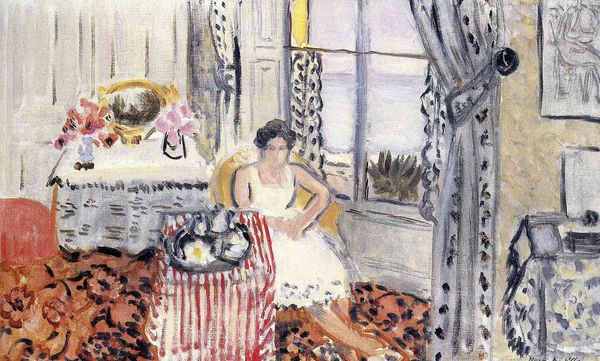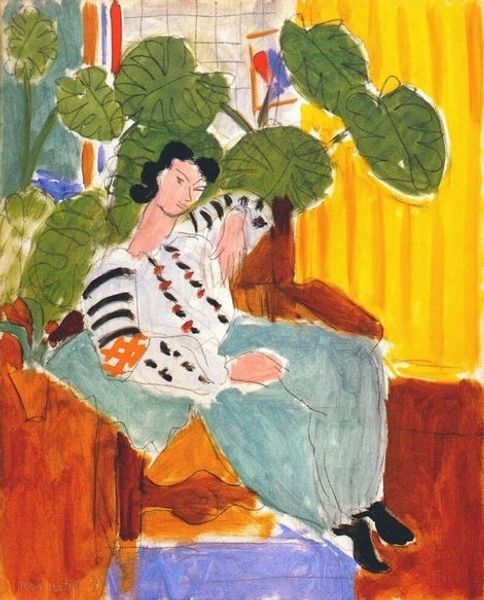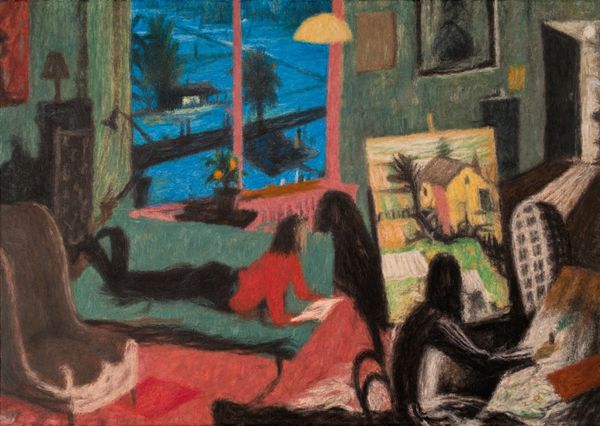
Copyright: Henri Matisse,Fair Use
Curator: Henri Matisse’s "Woman Seated in an Armchair" from 1940 is an artwork that uses strong color palettes, showing an elegant woman lounging comfortably in her home. Editor: My initial reaction? There’s a kind of subdued energy about this piece. Despite the bold color choices, there's a real sense of calm emanating from the woman, almost a challenge to societal expectations of women in her role. Curator: Absolutely. In the context of the Second World War, where anxieties were running high, Matisse painted an intimate interior space in the tradition of domestic interiors from women artists, from Berthe Morisot to Mary Cassatt. The space is calm with very bright colorations which seem to challenge a sort of conservative cultural moment in favor of some kind of expression. Editor: Exactly! Matisse is clearly challenging norms, presenting the model with dignity and an almost nonchalant strength. I wonder what kind of art world, specifically regarding gender politics and expressions of sexuality, the artwork inhabits. Curator: We see that intersectional complexity on many levels. Note, for example, how Matisse incorporates the patterning on the woman’s shirt, referencing her role and domesticity but elevating that motif, liberating that motif, in ways that mirror Fauvist painters’ earlier engagements with patterns in textiles. It really invites you to reconsider the role and interior life of this person as a way of thinking about people in this kind of space and time more broadly. Editor: True, there’s almost a defiance of art world stuffiness and traditional patriarchal expectations of his time by rendering such intimate moments of interiority through these visual and personal forms. It makes you consider what the work really is, at its core. Curator: Precisely! Through color and spatial play, he prompts us to ask: What constitutes a person's world, and whose stories matter in its portrayal? This approach also extends to class dynamics as Matisse creates an image that celebrates quiet contemplation while hinting at unspoken strength and lived experiences from the subject’s time, a truly rich intersectional dialogue between aesthetics and cultural reality. Editor: That adds another fascinating layer! Examining its relationship to broader gender and class-related dialogues offers a very contemporary, intersectional reading, and reveals so much more about its role beyond mere aesthetic beauty.
Comments
No comments
Be the first to comment and join the conversation on the ultimate creative platform.
